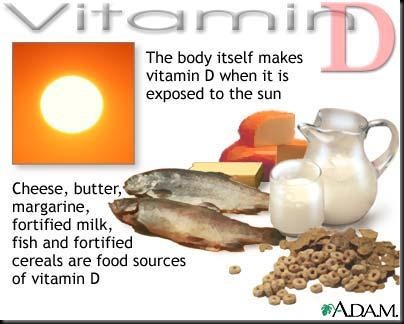A study shows that fluctuations in Vitamin D3 levels control the body’s innate immune response, affecting a skin wound’s ability to heal.
Richard L. Gallo, M.D., Ph.D., professor of medicine and chief of UCSD’s Division of Dermatology and the Dermatology section of the Veterans Affairs San Diego Healthcare System, says that several unexpected associations between fluctuations of the body’s vitamin D3 and infectious disease have emerged in recent investigations.
In a study appearing online February 8 in advance of publication in the March issue of the Journal of Clinical Investigation, Gallo and his colleagues look at how the innate immune system is controlled in the skin, and find that genes controlled by active vitamin D3 play an essential role in the process.
“Our study shows that skin wounds need vitamin D3 to protect against infection and begin the normal repair process,” said Gallo. “A deficiency in active D3 may compromise the body’s innate immune system which works to resist infection, making a patient more vulnerable to microbes.”
Gallo’s lab discovered that an antimicrobial peptide called cathelicidin is produced by wounds and is necessary to fight infections. Recently, several studies have begun to link vitamin D to cathelicidin. Researchers focused on white blood cells called macrophages that work to destroy invading bacterial microbes. Macrophages contain toll-like receptors that identify the invaders; when the receptors sense the presence of bacteria, they trigger cathelicidin production.
Gallo’s team has now discovered that injury stimulates skin cells called keratinocytes, which surround the wound, to increase the production of vitamin D3 and that this in turn increases the expression of genes (CD14 and TLR2) that detect microbes. These genes, together with active vitamin D3, called 1,25D3, then lead to more cathelicidin. In both mice and humans, a deficiency in cathelicidin allows infections to develop more readily.
“Our finding – that multiple, diverse genes controlled by 1,25D3 are increased after injury to the skin – suggests that the availability of D3 is essential to the wound. These responses are a previously unrecognized part of the human injury response,” said Gallo.
Lower concentrations of 1,25D3 in African Americans, likely due to a decreased ability to absorb vitamin D from sunlight, correlate with increased susceptibility to infection. In addition, 1,25D3 has been suggested to be an immune-modifying agent in pulmonary tuberculosis.
As a result of this and previous studies, Gallo and his colleagues are beginning clinical trials at UCSD Medical Center with both oral and topical vitamin D3. Normal volunteers, and patients with disorders in antimicrobial peptide production such as atopic dermatitis and acne, are being studied to determine if vitamin D3 can improve their natural immune defenses.
Source:Medindia


No comments:
Post a Comment